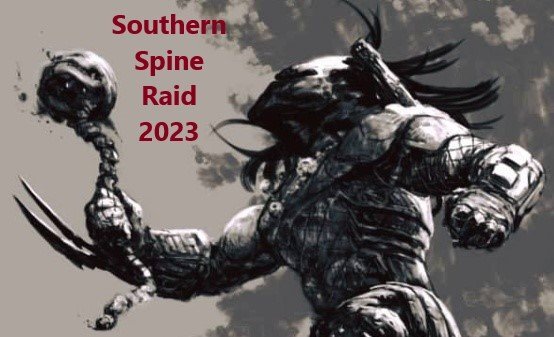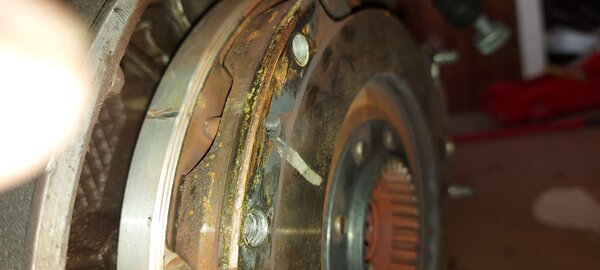-
Posts
907 -
Joined
-
Last visited
-
Days Won
32
Content Type
Profiles
Forums
Events
Gallery
Community Map
Everything posted by Pressureangle
-

Moto Guzzi V100 Sport Tourer: water cooled, 120 HP (26th of August 2021)
Pressureangle replied to p6x's topic in Newer models
My '68 Ducati Jupiter used valve caps for clearance adjustment. I still have some around. A PITA until I made a tool to depress the valve spring retainer down in situ. -

Nineteenth South'n Spine Raid 2023 Tennessee USA
Pressureangle replied to docc's topic in Meetings, Clubs & Events
Just saw this on WG; parking passes required for Great Smoky Mountains National Park. https://www.nps.gov/grsm/planyourvisit/fees.htm -

My Scura has acquired a cough - post TPS adjustment
Pressureangle replied to PJPR01's topic in Technical Topics
Frustrating. Nothing pops out at me. Can you go through the current symptoms, to clear the air as to status? I'm leaning towards an electrical issue, whether ignition or fuel. I'd remake all the grounds, special care to ECU and any grounds on painted surfaces. Not impossible to have an unfortunate concurrent but unrelated issue, like a failing cam sensor. -
Check to see if some automotive valve spring shims won't get you there. I have a few, 15mm x 32mm and 22mm x 35mm.
-

My Scura has acquired a cough - post TPS adjustment
Pressureangle replied to PJPR01's topic in Technical Topics
I recently discovered on mine, while replacing a cheap plug cap that broke, that the premium NGK cap on the other side had open circuited completely. Don't trust appearances. What gets measured gets done. -

Independent Guzzi Mechanic - Northeast/Mid-Atlantic Area of the USA
Pressureangle replied to CSP Rider's topic in 24/7 V11
Chester Springs to the Lodge at Tellico would be an absolute epic ride. SSR 2023 -

Nineteenth South'n Spine Raid 2023 Tennessee USA
Pressureangle replied to docc's topic in Meetings, Clubs & Events
-

Nineteenth South'n Spine Raid 2023 Tennessee USA
Pressureangle replied to docc's topic in Meetings, Clubs & Events
I'm making a T-shirt and you'll all be jelly. -
Then what do I call the 'useful-but-unlikely-to-be-used' sh*t I've kept all these years?
-
In the sense that the 'boss hoss' were motorcycles at all, yes- The Ugly American.
-
Laverda 1000 V6 del 1977, costruita in 2 esemplari per gare di endurance, motore 4T esacilindrico a V trasversale, bialbero 4V, cambio separato a 5 marce, trasmissione finale a cardano, 140 CV a 11.800 giri/min, 285-300 km/h. Picture Gérard Delafond
-
-

Nineteenth South'n Spine Raid 2023 Tennessee USA
Pressureangle replied to docc's topic in Meetings, Clubs & Events
Ididit -
Whatever happened to worms and corn balls?
-
To add, a full-ring disc (of any sort, in any device) is more prone to resonant vibration and potential failure (flywheels?) than if it's segmented. As far as the square inches of friction material, it's irrelevant except for the wear factor. The spring pressure and coefficient of friction determines the holding power, although less inches means higher coefficient which means grabbier friction zone. Particularly with modern material science, what you see is more likely to be mandated by drivability and cost than by performance and durability. I restored a '51 Pirsch fire pump, which resided on a 'truck'. (wagon attached to and powered by the pump motor). The clutch was dual disc, 3 pads per disc of some metallic sintered material with no cushion in the discs and a pressure plate sprung so hard I thought I'd screwed up something during assembly. Turns out it was my ignorance of application- in '51 they threw the water hose in a pond or ditch and pulled the pump WOT on the old 500 cubic inch Waukesha. If the source ran dry and the pump sucked air, when you threw the hose into a new spot and the water hit the pump it would instantly slip and murder the clutch on a normal over-the-road truck clutch. Drivability was not an option- the pedal was hard like rock and the action was like a light switch. But it didn't die on impact while doing it's job.
-

Can't choose between V11 and 2v CARC bike. Help!!
Pressureangle replied to Icenian's topic in Newer models
I'm partial to my '97 Sport-i, but of the choices you mention the 1200 sport would be my pick followed by the Griso. This opinion is of course based on no data beyond optics and my own personal preferences. -
I had intermittent starter issues ever since I bought mine, which increased over time to the point that it mimicked a bad battery- dimming lights, slow cranking, hard starting in general. Two years ago at the SSR it wouldn't crank at all, but later at home it started again. The long story short is that the pinion bearing in the starter was seizing. Here's the thread.
-
-
I'm with Pete. Wash everything out as well as possible, replace the failed bearing and drive on. On my last lube change I tried out Chevron Delo ESI 85/140. It's boron-based rather than ZDDP, has a thicker film surface and on my straight-cut gearbox made such a huge difference in noise that I wish I'd have measured it somehow. It's not on the shelf at your local auto parts but I think it's worth the wait to order.
-
Cinnamon. Bring along a big bag of Red Hots or Hot Tamales. Who knew?
-
Found CBR600RR mirrors are the fit for the 'Sport, though bases differ through the choices and some are perfect, some less so but usable. Also found (of course) that my voltage regulator has made doody apparently. Voltage has always been on the low side since I've owned it, about 13.8. More recently, and without explanation, voltage went up to 14.3 where it should always have been. One of the first things when I got the bike was to run ground wires to everything everywhere including the regulator so that's ok. On my ride to coffee Tuesday, left home at 13.3 and 30 miles later arrived at home at 12.1. Voltage rises some with RPM but never exceeds 13.1. I suspect one of the diodes has gone bad making for 1/2 charge and leaky battery syndrome. I've ordered a new Shindengen from Roadstercycle.com as I installed on my '74 Aermacchi, and even that weak suck charges 14.6. Now to decide whether to do yoga or take the fairing back off to change it. :/ Of course I'll verify both legs of the alternator too.
-
I used to teach my students first, "You can find 99% of all electrical faults with your eyes and fingers".
-

ANSWERED Winkie time: failed phase sensor
Pressureangle replied to Tomchri's topic in Technical Topics
All inductive sensors I've known have been pretty much the same, called out at .025" + or - .010". The stop working near .050". Mine actually had witness marks on the tip where it actually made contact with the tone ring, but it went 20k miles like that over a few years so I'm not blaming that- however, I was sure to clearance the replacement properly. Heavy truck and many automotive ABS sensors are mounted in a simple metal bracket with a tight slip fit, and are set for clearance by pressing them to zero against the tone ring. They find their home when bearing clearance pushes them back just a bit. (This also causes many ABS fault lights when bearings are loose or enough dirt collects to push them back too far) -

ANSWERED Winkie time: failed phase sensor
Pressureangle replied to Tomchri's topic in Technical Topics
Just another data point for future thread readers; I re-installed my old, highly suspect cam sensor- I'd already confirmed intermittent switching with a DMM. But to be sure after thoroughly inspecting the ignition wiring/coils/wires/caps/plugs with new parts where necessary, I returned the old sensor to service. The bike ran very smoothly and cleanly but for a stumble about 4200 rpm. I thought perhaps it was due to overfuelling by the newly restored injectors but the following day on the third lap around the block to check fuel changes (to no effect I might add) it went down on one cylinder and weakly at that. I drifted into the gas station for a minute (left my wallet home so no gas) and after a couple minutes cooling drove back finely to the house, about 1.5 miles away. This was precisely the same symptoms I experienced when I first bought the bike- the sensor failed with heat. The before/after test showed the stumble at 4200 even in neutral, and completely vanished with the new sensor installed. Tomorrow I'll re-install the fairing and get a hot test.






